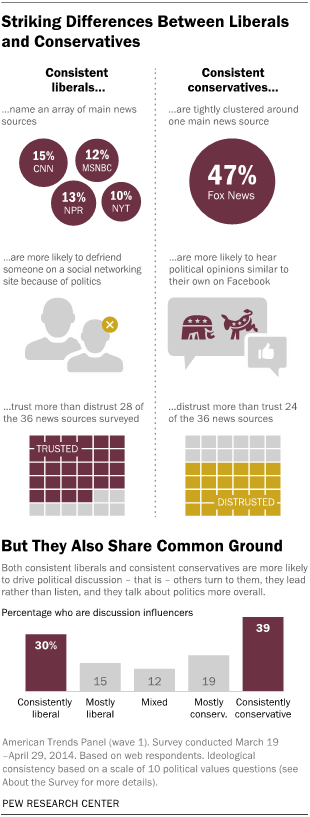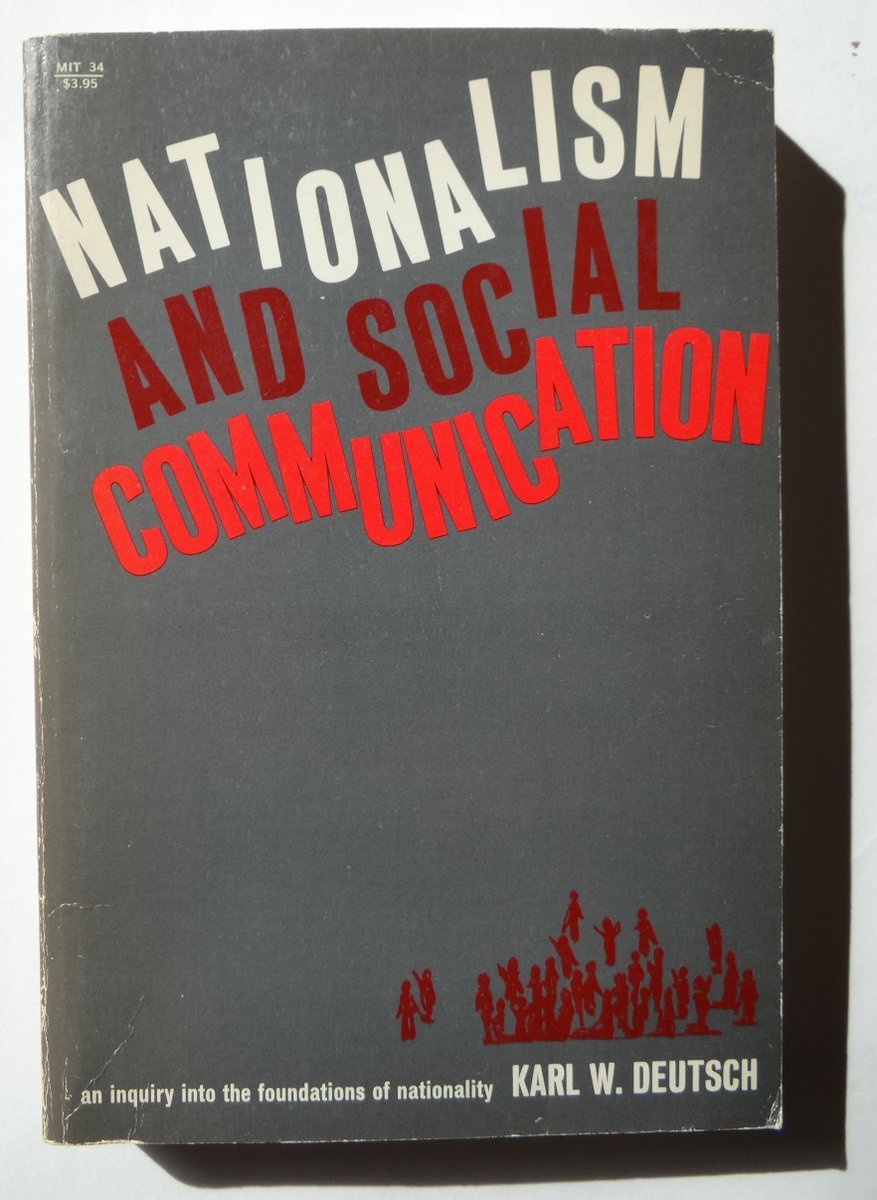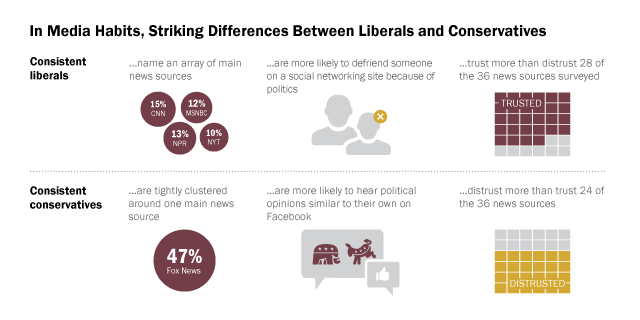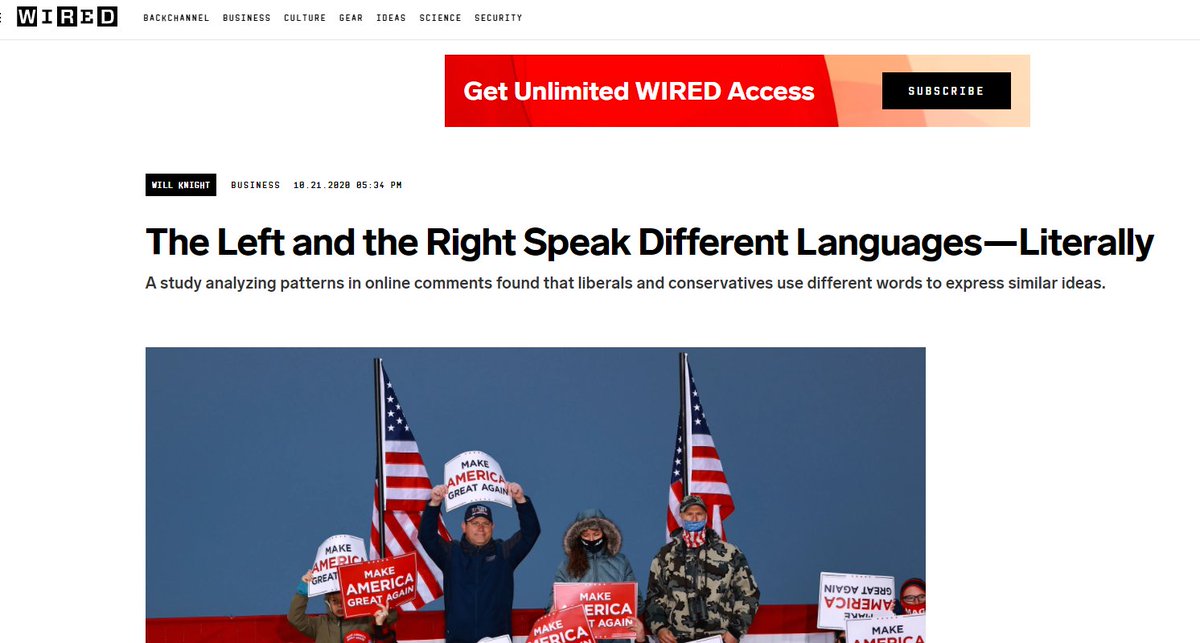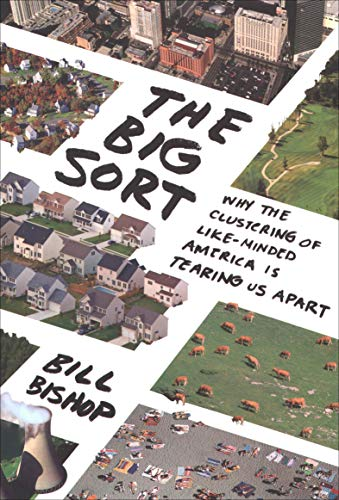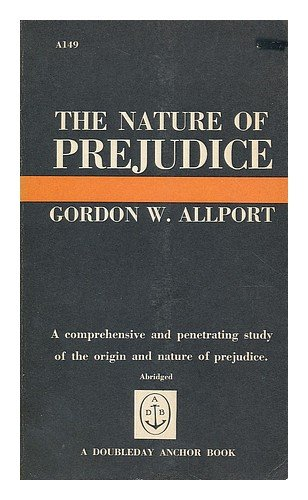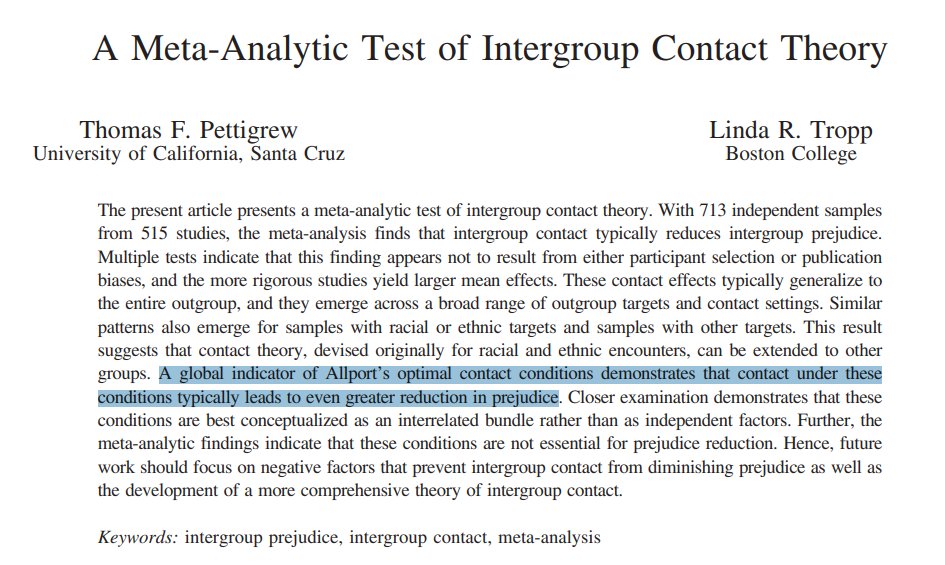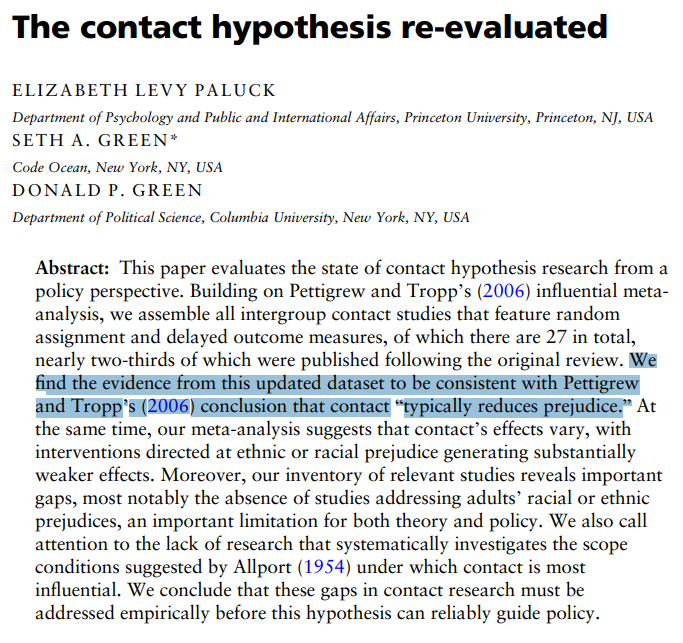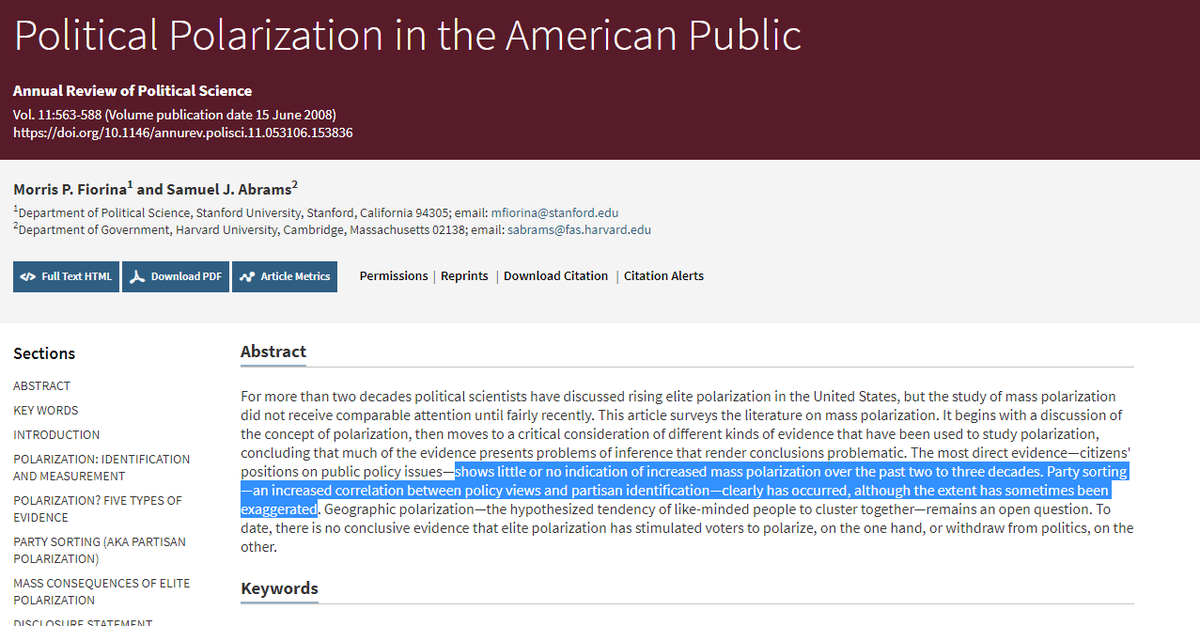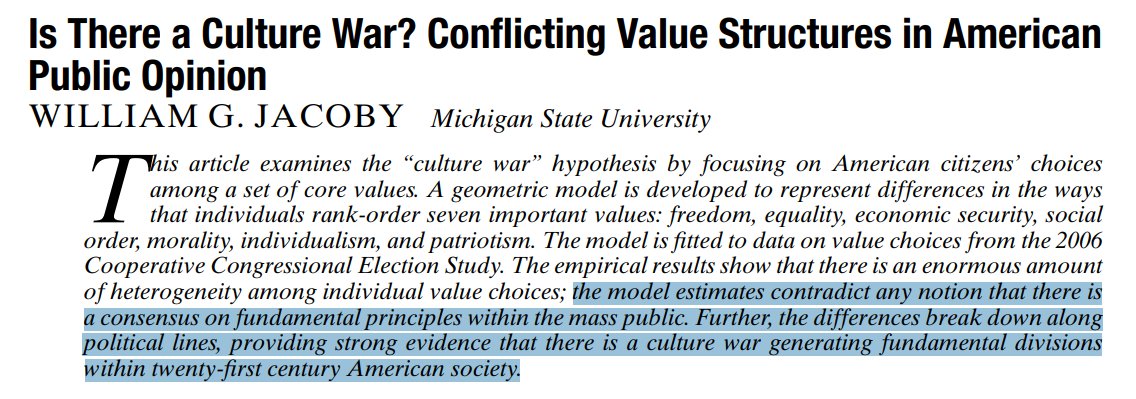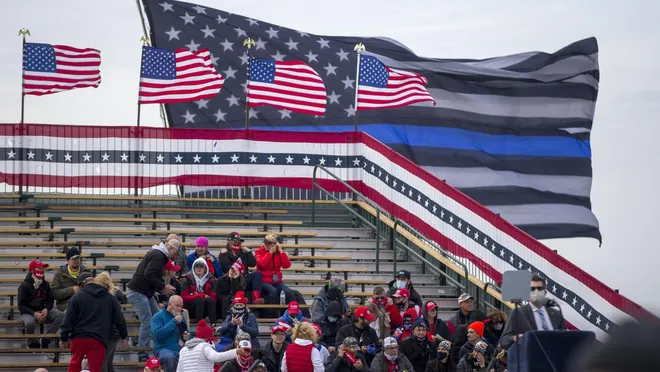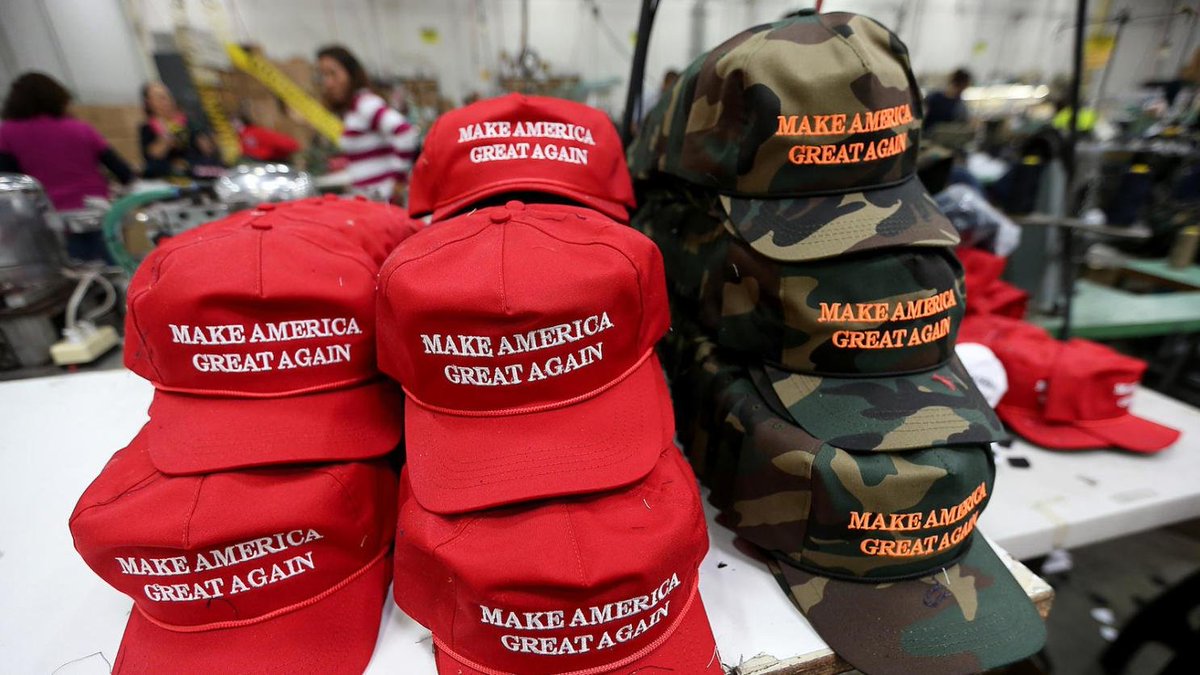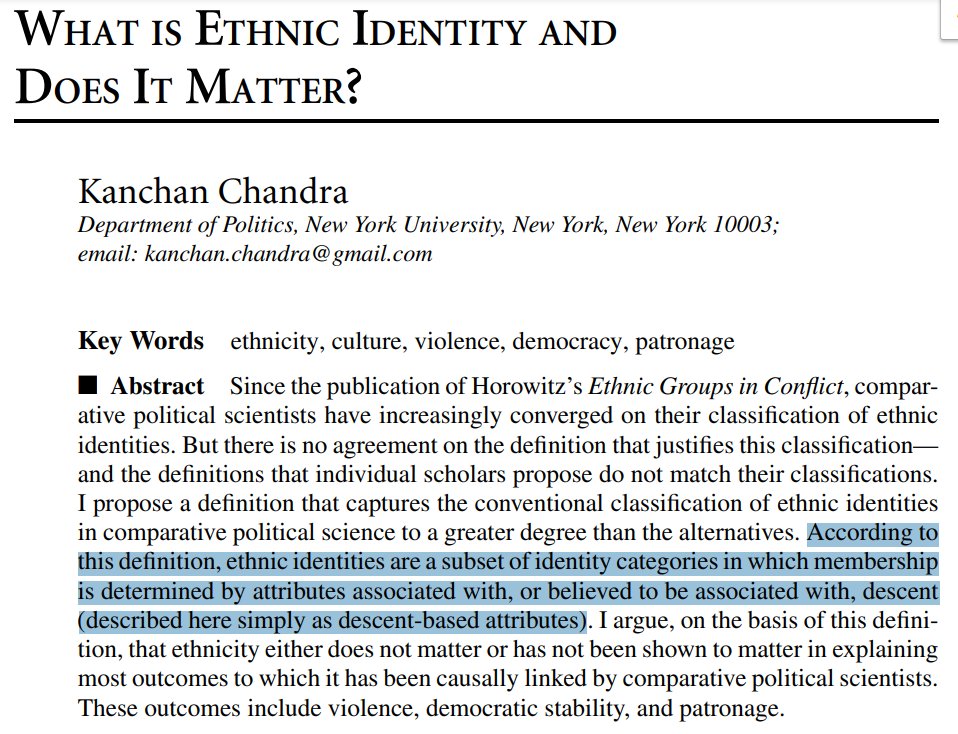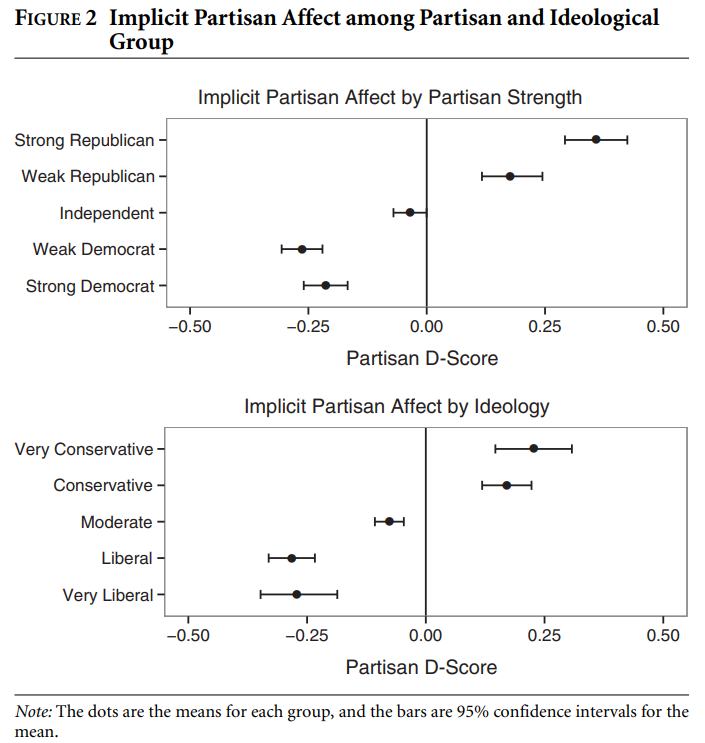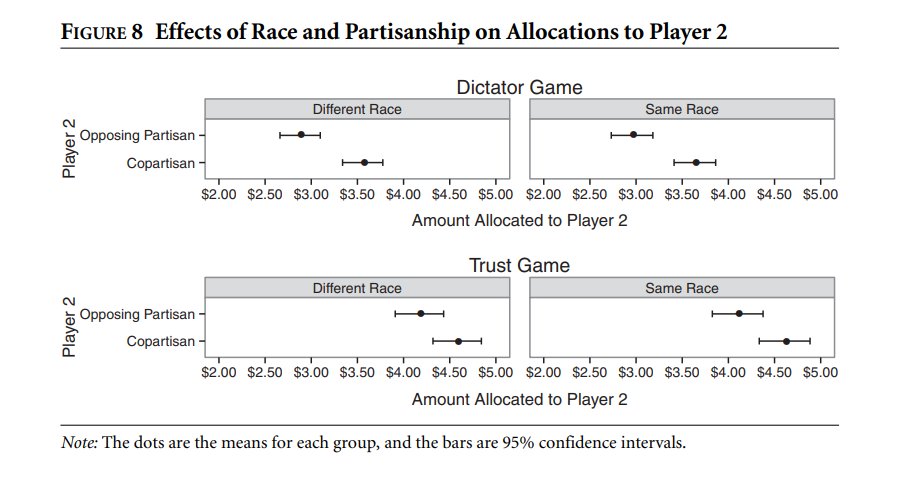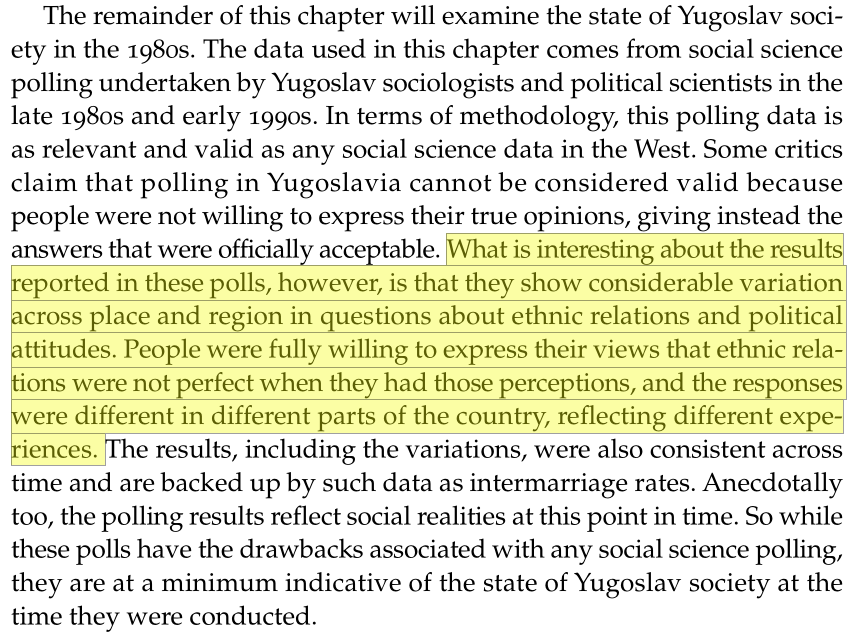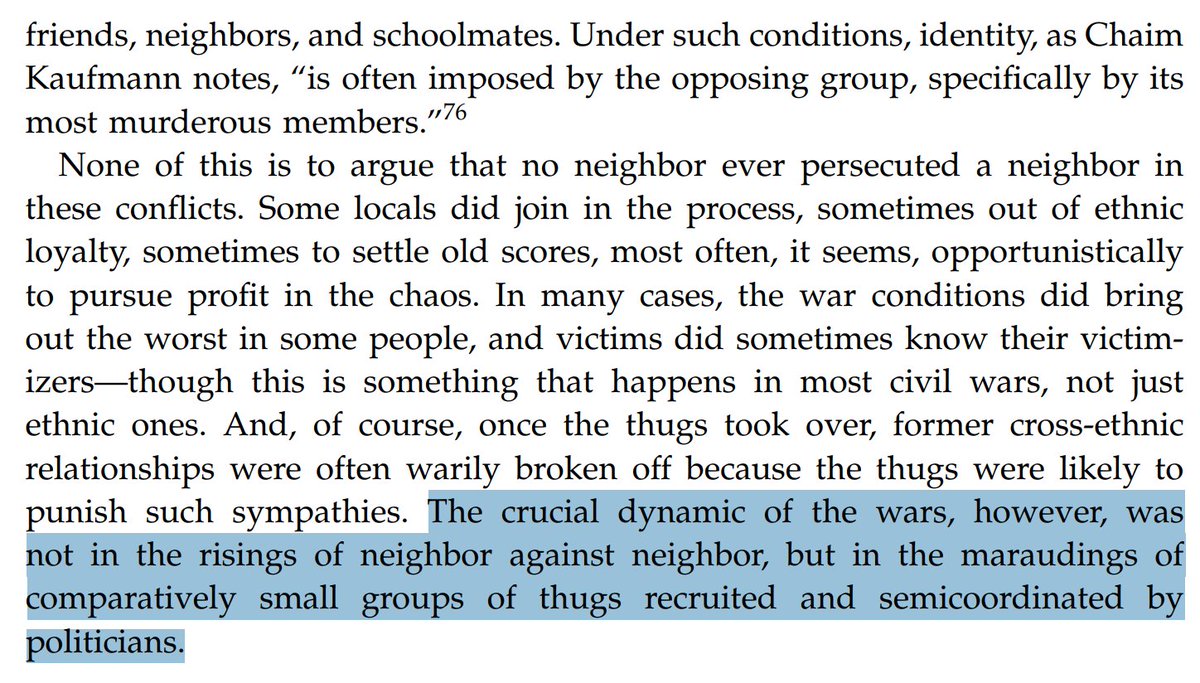Snyder & Ballentine (1996) had Yugoslavia in mind, specifically, when they wrote "Nationalism and the Marketplace of Ideas," but I can& #39;t help but wonder if we& #39;re not caught in the same bad outcome
They argue that conditions of newly democratizing states lead to segmented media markets, which in turn creates nationalist mobilization - particularly against simultaneously "hostile" and "weak" Others - and diverts away from demands for political liberalization
The segmentation of the media market comes from, in their case, the particular conditions which arise out of privatization, as happened in the case of Central/Eastern Europe& #39;s transition from communism
But CRUCIAL to remember: just because Central/Eastern Europe& #39;s unique circumstances led to media market segmentation DOES NOT MEAN that this is the *only* thing that causes media market segmentation.
No matter where the media market segmentation actually comes from, as long as you have media market segmentation, you have the potential for nationalist mobilization.
Which brings me to the next point: Snyder and Ballentine were concerned primarily with ethnic conflict in states which were transitioning away from a particular kind of authoritarian rule. But this kind of mobilization - what might more broadly termed "illiberal mobilization" -
doesn& #39;t necessarily need an *ethnic* identity specifically. There& #39;s nothing in the theory itself that limits it.
So imagine if you get the kind of nationalist mobilization that we saw in transitioning states in late-80s/early-90s C/E Europe, but around *partisan* identities
So imagine if you get the kind of nationalist mobilization that we saw in transitioning states in late-80s/early-90s C/E Europe, but around *partisan* identities
How did we get to media market segmentation in America? After all, we didn& #39;t transition from one-party rule like Yugoslavia, Russia, etc. So what alternative processes led to this?
I& #39;m not an innovator: I point to old, well-worn tales.
I& #39;m not an innovator: I point to old, well-worn tales.
The rise of cable news, which fell outside the ambit of broadcast content regulations.
The aggressive play made by Fox News in the 90s/early 00s to monopolize conservatives *specifically*
The aggressive play made by Fox News in the 90s/early 00s to monopolize conservatives *specifically*
This, in turn, left non-Fox outlets with increasingly liberal audiences, who, in turn, demanded - passively, with their eyes, and actively, with their feedback - more liberal news and commentary
Which, the vicious cycle already underway, drove even more conservatives toward the welcoming embrace of Rupert Murdoch
Add to this TV news media dynamic the rise of the internet, and of social media in particular. Again, the old story: Facebook and Twitter wanted your engagement for advertising dollars, and information to sell to third parties
This meant that - especially as your circle of friends grew more and more homogeneous from a partisan standpoint - you became even less likely to see news from the "other side."
The drumbeat of segmentation drove every onward
The drumbeat of segmentation drove every onward
Social media and the ecosystem of smaller news outlets that arose primarily to be shared and consumed on those platforms proved to be just as poorly regulated as private television media in early-90s post-Communist countries
The end result is a media market that is completely segmented. Charles Tilly (1995) once wrote that "Democracy is a Lake" - just as all the streams and rivers are very different in their locations and courses, winding up at the same endpoint nonetheless,...
so too can many different relational processes lead to the same outcome (i.e. democracy)
I& #39;d argue we can think about de-democratization in much the same way. Our media market segmentation - which has primed our politics for authoritarianism and violence -
I& #39;d argue we can think about de-democratization in much the same way. Our media market segmentation - which has primed our politics for authoritarianism and violence -
might have been arrived at very differently than Yugoslavia& #39;s - the course of our terrible "river" was very different - but we now find ourselves near the mouth of that river, in the same very toxic lake.
"But surely," you object, "we& #39;re all Americans. So there& #39;s no real identity around which to conduct this illiberal mobilization."
The problem is, *the information that you receive and consume is at the very heart of what makes identities*
The problem is, *the information that you receive and consume is at the very heart of what makes identities*
Karl W. Deutsch (1954), whose work forms the basis of more famous texts such as Anderson& #39;s (1983) "Imagined Communities," argues that national identities emerged as a result of the common information, the common experiences, that arose out of modernization and industrialization
National assimilation, he wrote, would proceed according to the balance of several factors. Most relevant here:
* Similarity of Communication Habits
* Facilities for Learning and Teaching
* Frequency of Contacts
* Values and Desires
* Symbols and Barriers
* Similarity of Communication Habits
* Facilities for Learning and Teaching
* Frequency of Contacts
* Values and Desires
* Symbols and Barriers
In a nutshell, the differences between people will subside when they have:
* similar communication habits
* share facilities for learning and teaching
* have frequent contact with one another
* have similar values and desires
* share common symbols, and barriers w/r/t 3rd groups
* similar communication habits
* share facilities for learning and teaching
* have frequent contact with one another
* have similar values and desires
* share common symbols, and barriers w/r/t 3rd groups
Our segmented media market means that, over the course of the past several decades, these factors, which once weighed in favor of the assimilation/homogenization of self-identified Democrats/liberals and Republicans/conservatives, are now weighing against it
Indeed, Deutsch& #39;s theory is not just one way: he writes that, as common experiences erode, you should expect once-similar people to differentiate. And that, in fact, *this process should accelerate once small differences begin to emerge*
Democrats are becoming more similar to one another: Republicans are becoming more similar to one another. Both are becoming *less similar to each other* as time goes on, and that process - which, I think, began very modestly in the 1990s - is now picking up speed
Let& #39;s think about those factors which Deutsch says leads to assimilation or differentiation: we& #39;ve already seen that the communication habits of liberals and conservatives are different.
We have some evidence to suggest that this is now manifesting in *literally different patterns of speech*
What about facilities for learning and teaching? Sure, we don& #39;t have de facto school segregation on partisan lines, but the geographic sorting of voters is an old meme, famously pointed out in Bishop (2008)
Now, Bishop makes a "strong" argument: that partisan tastes literally *drive* geographic sorting. That has less empirical backing. But the weak version of the thesis - that there is geographic clustering of partisan identities - is definitely supported
Indeed, Webster even argues that moving to a place *brings your partisan identity and preferences in line with the prevailing local politics*
The upshot is: even if people aren& #39;t literally thinking "I& #39;m a Democrat, so I& #39;ll move to a blue state," this geographic sorting means that the children of Republicans and Democrats, on average, *cluster in different facilities for learning and teaching*
The next of Deutsch& #39;s factors - the contact balance, whether you have lots of little contact with the out-group - is also frustrated by this geographic sorting. The people in small Red state towns and big Blue state cities, being physically separated from one another...
are less likely to run into one another. The contact balance in both context favors contact with co-partisans, rather than balanced contact, or contact with non-copartisans. And a lack of contact, as Allport (1953) famously demonstrated, breeds contempt.
What about Deutsch& #39;s next factor of assimilation/differentiation, values and desires? After all, some famous work has shown that people& #39;s "policy preferences" aren& #39;t as polarized as those of political elites!
"Ah," say other scholars. "That& #39;s the wrong place to look. Look at values and affect, not policy preferences."
Once you look at these more fundamental things, you find that actually there& #39;s very little agreement among Americans, specifically across the D-R partisan divide
Once you look at these more fundamental things, you find that actually there& #39;s very little agreement among Americans, specifically across the D-R partisan divide
Which brings us to our very last factor, symbols and barriers. I don& #39;t have much on this, but it would appear that, yes, a kind of "semiotic sorting" is occurring along the partisan divide. https://www.usatoday.com/story/news/factcheck/2020/10/28/fact-check-thin-blue-line-flag-prominent-trump-rallies/6058924002/">https://www.usatoday.com/story/new...
Has any other campaign in American history had so much unique symbology? The thin blue line, the red MAGA hat and its variants. All symbols which promote in-group (R) coherence, walling them off from the out-group (D)
No other symbol screams "Democrat" quite as loud. BLM, LGBTQ+ symbology, etc. might be *associated* with Democrats on some level, but they don& #39;t uniquely identify them, unlike the thin blue line or the MAGA hat
"Okay, so Deutsch& #39;s factors favor dissimilation of R and D partisans. That doesn& #39;t mean we& #39;re ready for illiberal mobilization. After all, Synder and Ballentine were talking about ethnic identities, and for all their differences, D and R aren& #39;t ethnic identities," you object.
That& #39;s true. Ethnic identities are different from partisan identities. Partisan identities are whether you identify with a particular political party, whereas ethnic identities are generally defined with respect to descent-based attributes
Just one problem: partisan identities have pretty much all the exact same consequences as ethnic identities. Implicit bias? Prejudice? Stereotyping? In-group preference? It all works on partisan identities too.
Since ethnic identities and partisan identities work on the exact some underlying cognitive and affective processes, *it must be the case* that, in principle, you can get illiberal mobilization based on partisan identities, not just ethnic ones.
So, to summarize: (1) it appears that our media market has gotten more segmented; (2) segmented media markets, along with a set of other phenomena, is driving identity-differentiation; (3) partisan identities work just like ethnic identities on the psychological level; and
(4) media market segmentation drove nationalist mobilization in Central/Eastern Europe, but there& #39;s no reason why you can& #39;t get similar "illiberal mobilization" along a partisan cleavage.
But must it necessarily come to blows? After all, you might object, "surely ethnic enmity was widespread in Yugoslavia, and we just don& #39;t have that many people who hate the out-group enough to start shooting like they did there"
It need not necessarily come to blows, but to this objection I raise two points: first, the extent of ethnic enmity in Yugoslavia was way overstated, by lazy Western journalists who wanted an easy way to frame the breakup of Yugoslavia... (Malcolm 1994)
and by cynical Yugoslav political elites, eager to paint all Croats as ustaše and all Serbs as četnici. (Gagnon 2004)
The second point I want to raise to the "surely it need not necessarily come to blows" argument, is this: you do not need widespread enmity to set off a truly catastrophic series of events.
The actual proportion of rabid cheerleaders for ethnic cleansing was very small. Indeed, the thugs that did the killings in Bosnia-Herzegovina were not ideologues: they were just criminals who used ethnicity as an organizing principle. (Mueller 2000, "The Banality of Ethnic War")

 Read on Twitter
Read on Twitter

